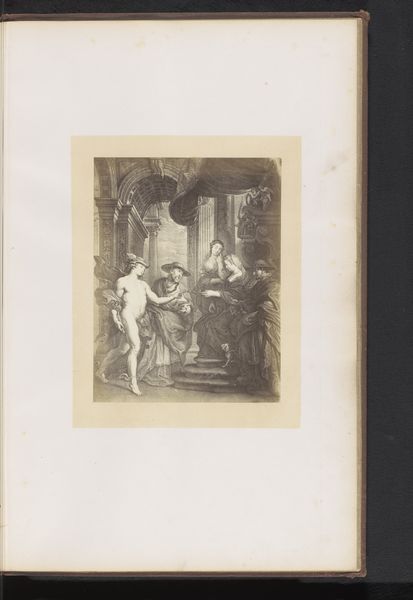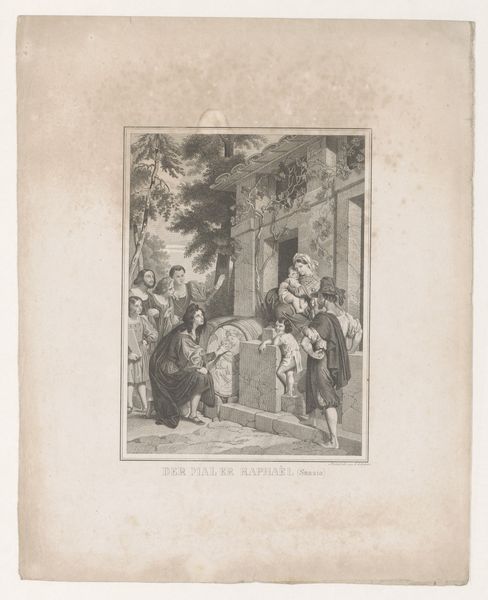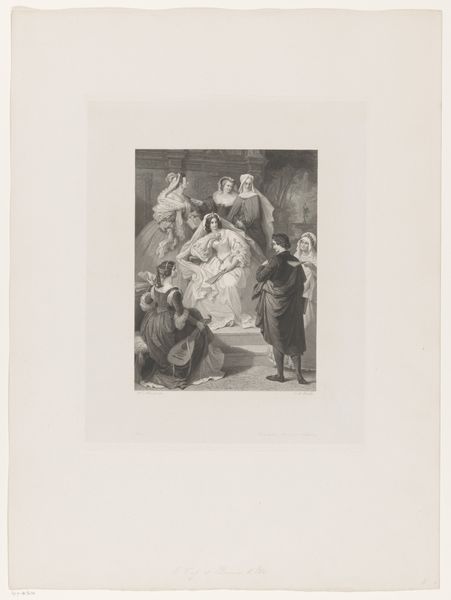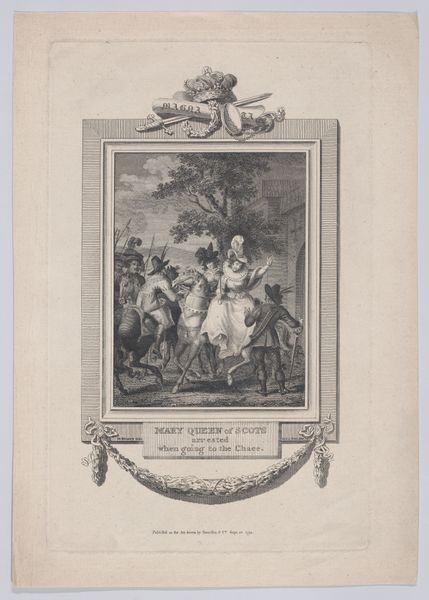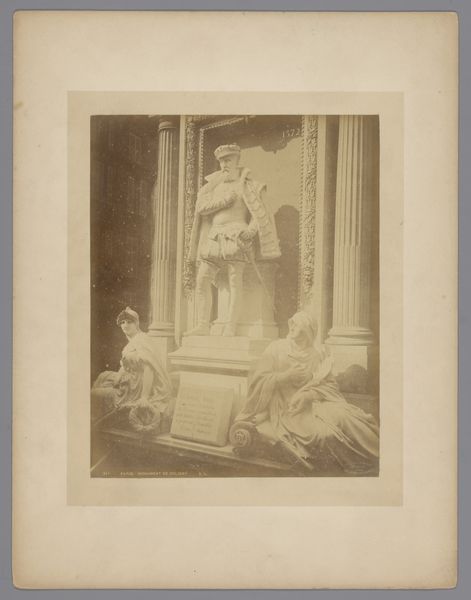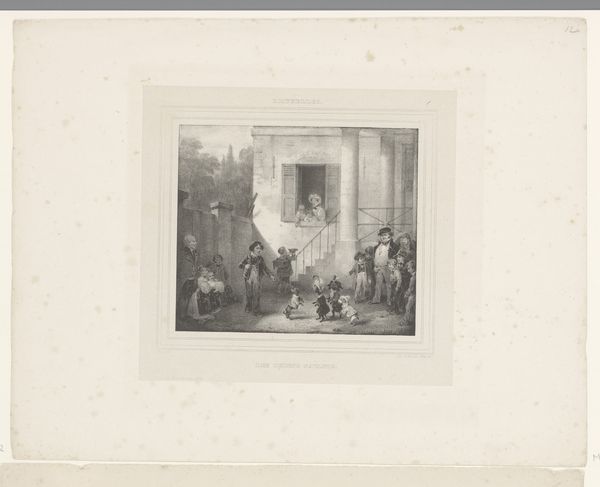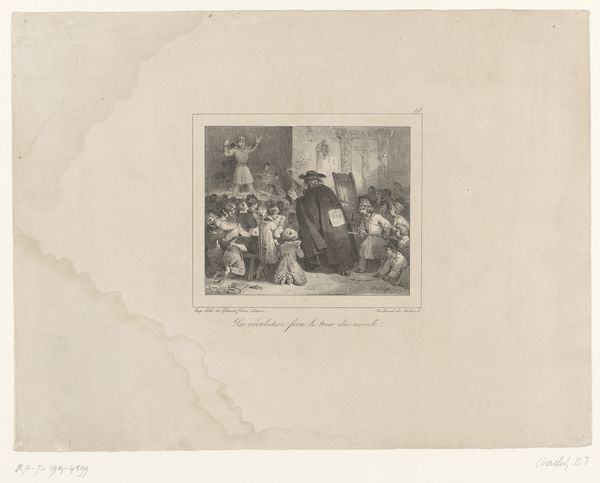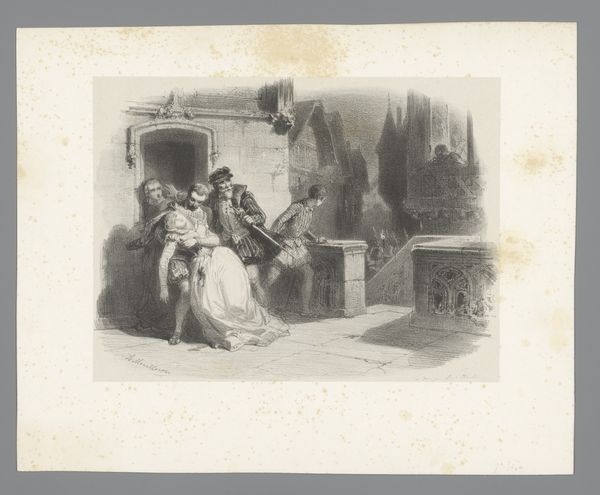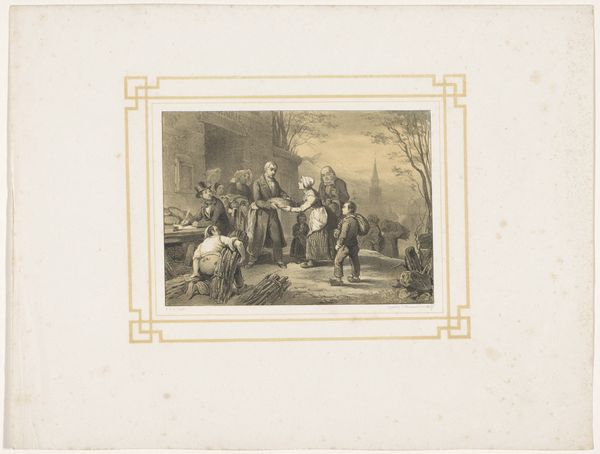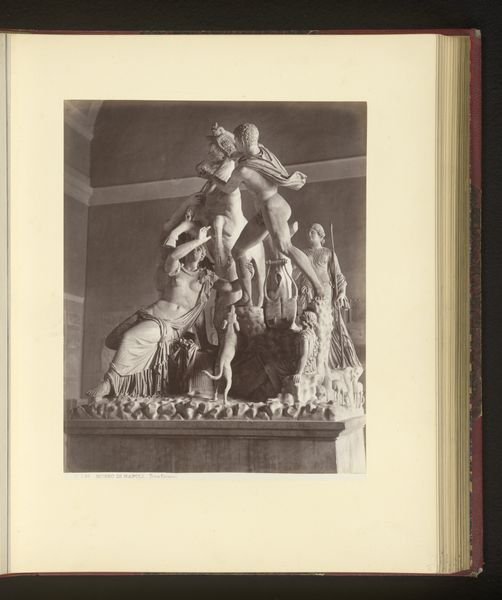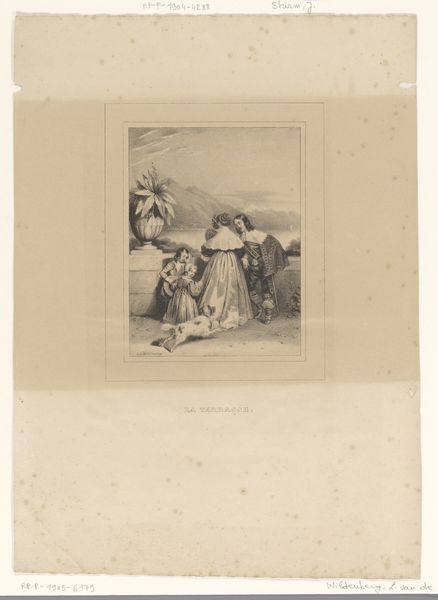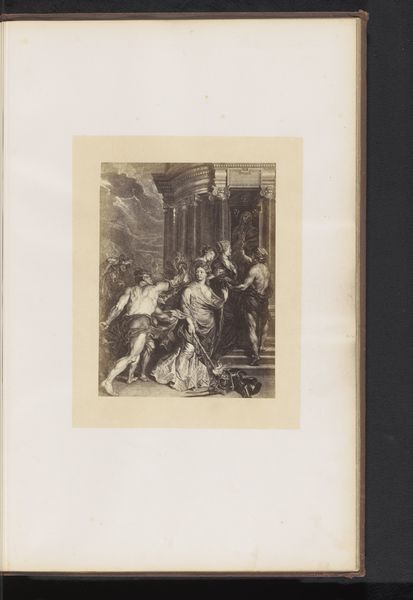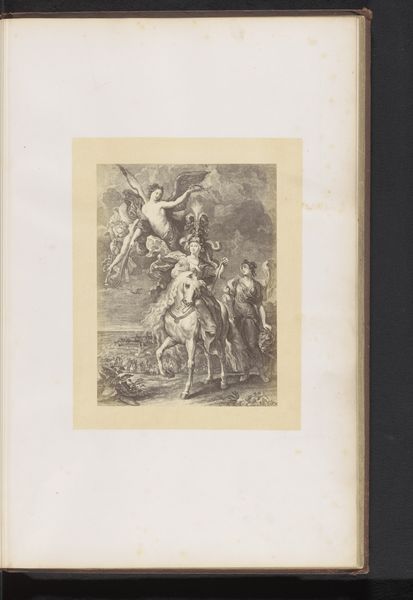
Dimensions: Sheet: 17 9/16 × 12 3/8 in. (44.6 × 31.5 cm) Image: 10 9/16 × 7 5/16 in. (26.8 × 18.5 cm)
Copyright: Public Domain
Curator: Welcome. We’re standing before Henri-Charles-Antoine Baron's "The Roaming Musician," an engraving from 1853. What captures your attention first? Editor: It's the performance—the labor. The musician, positioned so prominently, literally elevating himself to solicit donations while everyone around him seems uninterested. The contrast is stark. Curator: Indeed. Note the meticulous detail, hallmarks of the Baroque influence. See how Baron uses shadow and light to sculpt each figure. Consider the classical architecture providing a stage for this drama. Editor: But a stage built by someone. And maintained, perhaps? We should question the hierarchy. Here is this man laboring for pennies in front of aristocrats. Was he paid fairly? We are considering production of music for those who benefit at the lowest cost. Curator: Your point is well-taken regarding hierarchies. But examine, also, the narrative construction. It's like a freeze-frame of a much larger story—observe how the artist arranged everyone. The composition suggests both leisure and privilege—a specific perspective, wouldn't you say? Editor: Definitely a selective narrative. Think about the copper plate used in the engraving process: mined, smelted, polished – then meticulously worked to depict leisure, an unevenly distributed benefit based on exploitation and class distinction. How were these materials acquired and crafted? We need to include all forms of production within the same frame, even if only virtually. Curator: We begin to touch on broader issues regarding art’s role in depicting and reflecting societal structures. Editor: Precisely! Looking beyond the apparent “elegance” lets us examine labor, cost, and how art plays into creating value in specific historical moments. Curator: That prompts new considerations about its meanings across time, doesn't it? Thank you for pointing that out, as I did not notice it upon first view. Editor: And thank you, that helps us realize why art means different things, which could start more conversations.
Comments
No comments
Be the first to comment and join the conversation on the ultimate creative platform.
